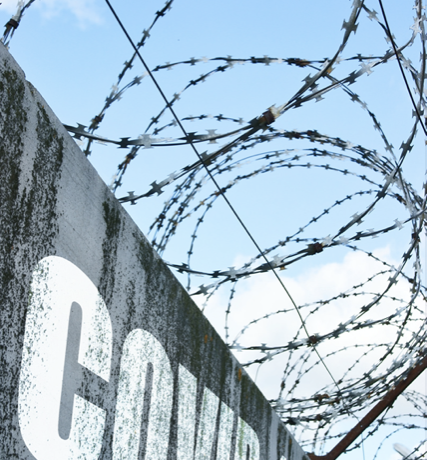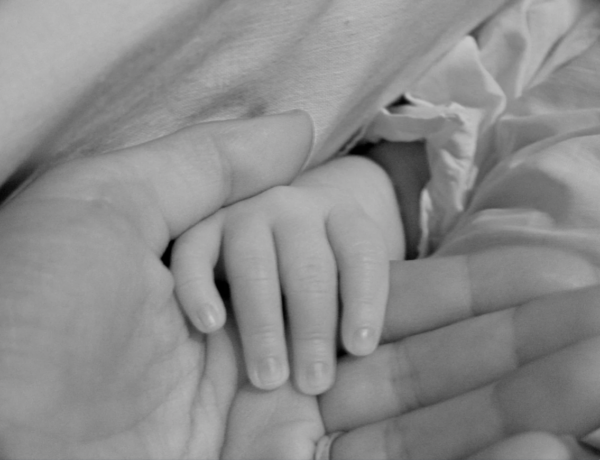With all due respect to BOP Director Colette Peters’ noble notion of “reforming the Bureau of Prisons,” true prison reform is untenable, if not simply impossible, under present conditions. There has been public clamor for prison reform for decades. Several agencies and groups have engaged for years in the task and continue to promote change. But nothing can or will change anywhere in the U.S. prison system, state or federal, for the moment, beyond superficial cosmetics such as half-hearted attempts at reducing over-crowding, providing new uniforms, or redefining inmates as “incarcerated adults.” Short of a total grass-roots paradigm shift in our society concerning the role of prison, the structure of prison, and the politics of prison nothing will alter our present course. There are far too many considerations to be entered into in this short essay, far too many issues to address, even by the most ardent battle-hardened reformer. This writing is simply a cursory look at the barren landscape.
To begin with, the primary source of our problems with the prison system originates in the courts, in our judicial process, the arcane and draconian rituals of trials and sentencing that we have dragged along from previous centuries and that have ceased to accurately reflect our current (and far more sophisticated) understanding of the psychology (and plasticity) of human nature. Sentencing is now a bureaucracy of arbitrary processes that applies excessive punishment with little relevance to individual acts or any consideration of rehabilitative potential in the background and behavior of the offender. It has become an arbitrary process of numbers and guidelines (along with “enhancements”) created with the idea of achieving impersonal judgment and arriving at impartial “justice.” This is comparable to those “paint-by-number” hobby kits that suggest the production of “art.” In neither case is real “justice” or real “art” actually the final result. Our legal system has also become a vengeful tool for society, a way of deflecting its shame, its taboos, and shortcomings on to those who present themselves as potential targets through ill-conceived mendacious or self-gratifying actions. As one example of how things have progressed in the last forty years, the sentence leveled against a child pornography offender in the early 1990s would have amounted to a year of probation. Now most individuals with similar offenses, usually internet offenders, receive at least eight to ten years of prison time; many if not most receive substantially longer terms. This has had little (if any) impact on the proliferation of child pornography on the internet, nor have the courts taken account of the fact that actual crimes against children were already decreasing exponentially as the more punitive sentencing was being put into effect. Another example is the absurd disparity in drug offender sentencing caused by the kind of drugs involved (crack cocaine or heroin vs. powder cocaine or marijuana) and enhanced by the amount of material in the offender’s possession. This seems particularly hypocritical in light of the fact that alcohol and nicotine, drugs that cause vastly more damage, physically and financially, in society, continue to be perfectly legal. Then there are the highly contested weapon possession laws which, regardless of the sentencing enhancements that continued to be levied against offenders, have had absolutely no impact on random shootings in the U.S., which continue to occur with horrifying and predictable frequency.
Secondly, prison is no longer solely an instrument of isolation for those who may be truly dangerous to others or themselves. It is now also a warehouse, a kind of repository, for those who society has deemed in some way “dysfunctional,” “objectionable,” or “inappropriate.” Hence a sudden “need” for more low-security prisons in the federal system to house an increased intake of non-violent offenders. And yet, regardless of high- or low-security housing, all prisoners are completely cut off from outside social contact. Visitation by family members and day-to-day communication with the outside world are made extremely difficult by systematic prohibitions and restrictions. Neither does the system approve of post-release social interactions between former inmates outside the walls, thus instantly devaluing and dooming all such temporary friendships or other interactions that may naturally develop inside the institution. Despite the rehabilitation narrative preached in glowing terms by prison PR departments the damage done to anyone exposed to these inhibitory and alienating processes, not to mention forced over-crowding, is profound and long-lasting. The social isolation and imposed rejection to ALL social interactions caused by impossibly long sentences, makes prison now a kind of permanent cemetery for the already socially dead. Being an inmate is no longer a temporary stage where a “debt to society is paid.” As it stands now, an offender is an inmate for life, unable to regain the freedoms and opportunities he enjoyed as a free citizen. Prison, the promise of more and more prison, has become an addictive source of votes for aspiring politicians and pundits fearmongering about crime and safety to their constituents and followers, as well as a vital source of economic revenue for states and communities that have lost sustainable sources of work for their inhabitants. Vast swaths of the old Rust Belt and other areas that have lost their industrial base now rely heavily on prison-building and prison staff training for their economies. Which only means that criminals MUST be found, criminals become the “basic natural resource” of this prison-industrial complex which feeds several commercial enterprises that profit by supplying and maintaining the system and its hapless inhabitants. That may explain why there are now, after nearly forty years of this insidious and vengeful process, thousands of new laws on the books (and always more) and nearly twenty-four million felons in the U.S. Prison and legal punishments have also become fodder for prime-time news media, a subject to draw eyes and ears to commercialized news programs. Scandal and crime titillate the ignorant masses and spur on commerce. The question arises: Is this process creating a more humane and peaceful reality? Or is it doing perhaps just the opposite?
Aside from this, our current prison systems are, of necessity, petri dishes for violence and corruption. Corrections employers, state, and federal governments, find it difficult to attract bright, young, educated employees (who, understandably eschew this type of work) and end up instead with workers and staff who are mostly uneducated and inexperienced, folks that can’t find employment opportunities anywhere else. The system provides such persons with long-term employment, decent benefits (if not always top-drawer wages) and a sense of “honorable duty,” not to mention a uniform, a symbol of power, status, and control. The prison system patterns itself solidly on another dehumanizing institution—the military—from which it draws some of its employee base. On the surface, the idea of “discipline” and “rules” seems attractive, a way to deal with rulebreakers and scofflaws so that they “learn their lesson,” “learn to behave properly.” But the reality is that most people who end up on the wrong side of the legal system are already in some way poorly “socialized.” Far from making them better citizens, subjecting them to further dehumanization, forcibly isolating them from their lives and families, their social connections, and responsibilities, only makes them worse. In this way an unbreakable cycle of incarceration is established. Prisons become breeding pits for antisocial behaviors, for future criminals and schools for young lawbreakers to improve their “skills” and “attitudes.” It’s an old lesson we keep failing to learn: violence simply breeds more violence.
Because those who work for the system are impacted by the counterproductive and pointless absurdity they witness day after day, they become jaded. This leads to corruption on the side of those entrusted with managing the institutions. Violence and corruption flow freely, move up, down and across the spectrum of life behind walls and fences. Guards feel empowered to impose their will, to reward themselves and their egos and punish (or to put it euphemistically, “correct”) without compunction the social outcasts society has dumped in their lap. Punishment (“correction”) for the miscreants is how they are taught to view their job responsibility. Inmates, on the other side of the equation, learn to cut guards into their hustles, or to find ingenious and devious ways of avoiding detection and sanctions. At its worst a prison system, as we now conceive it, can easily devolve into the kind of pathetic horrors that took place in Abu Ghraib, Iraq, in the early 2000’s. Without proper, thorough, and unbiased oversight, prison always and inevitably defaults to this grotesque level.
Capping this dehumanized system are the guard unions, systems that insulate prison officials and staff from responsibility and consequences for their actions or inactions. Additionally, there are legal mechanisms like “qualified immunity” that shield prison guards and staff from civil legal repercussions when they screw up (intentionally or not). BOP Director Peters has already found herself confronted with this insurmountable issue at Thompson USP. In this epic showdown her only alternative was to close the institution where guard-on-inmate violence had reached uncontrolled proportions. Re-opening the institution did not eliminate the problem. Nor will it. Closing and reopening any institution under some different security “category” does not change the basic underpinning frameworks of corruption and violence that are endemic throughout. As was stated earlier, the paradigm of prison, its very foundations, must shift. Cutting off some branches (or even pruning) will not uproot the tree. The system and the psychology behind it must be rebuilt from the ground up. The pathology needs to be treated not with Band-Aids but with long-lasting and effective solutions.
It is possible to argue that the social problems in the U.S.—jingoistic exceptionalism, racism, predatory capitalism, cronyism, violence—promote our brand of prison and our very national essence is corrupted. Expecting such a society to produce a non-corrupt prison system is possibly a pipe dream. How such a paradigm shift, a total remake that would avoid the pitfalls I describe here, can be brought about is a challenging problem of astronomical proportions. In our current increasingly contentious and irascible political chaos such a shift simply cannot happen. Possibly the only hope for change is in the economic failure of the prison system. At present that seems unlikely. Politicians and pundits hawk for more and more funds and tax revenue to lock up criminals and build more prisons. Warnings of crime waves sweeping the country feed the deepest fears in society (as they have before) and this drives political chaos and short-sightedness. The argumentative antics in Congress are often as foolishly risible as the tumbling and spilling from a circus clown car. After Covid there has been an increase in senseless shootings and random violence, but that type of crime will hardly be deterred by building more prisons. Nor will passing more laws and locking up men for their sexual inappropriateness simply eliminate the issue of violence, abuse, and harassment against women and/or children. The only possible alternative is to address many of these dire social problems as well as socio-economic issues that generate crime, with aggressive educational campaigns and economic innovations, a process that will not show immediate results but should be considered as a long-term investment in a true organic improvement of our society.
Whether we find the will to do this or simply continue on our present disastrous and destructive course only time will tell.
For the moment, however, prison and legal reform seem far beyond our capabilities.





No Comments